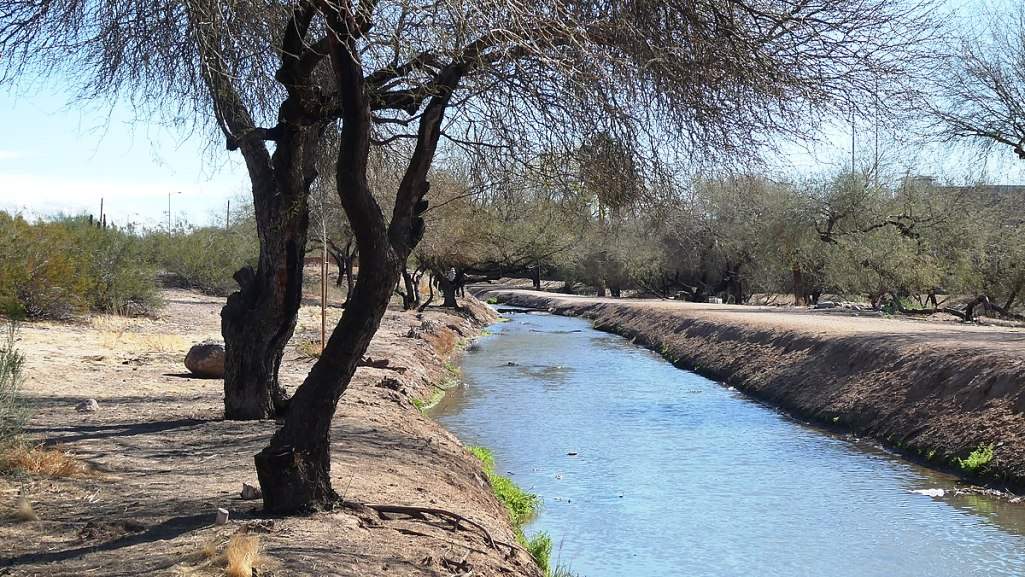Papago Park is situated about 10 kilometers (6 miles) east of downtown Phoenix. Papago Park Phoenix is a popular place to unwind, with a number of hiking and cycling trails, picnic areas, and fishing ponds. The majority of Phoenix’s best attractions are situated within the sprawling borders of Papago Park. The municipal park of Phoenix is most famous for its many attractions, but the award-winning Desert Botanical Garden is a special point to visit.

Covering more than 145 acres (59 ha), the park displays 20,000 cacti and desert flora from around the world. The most popular part of the garden is the paved Desert Discovery Trail. This trail winds past half the known species of cacti in the world. Some of the rarer and more easily broken specimens can be found in close proximity to Cactus House and Succulent House. Also of particular interest is the Sybil B. Harrington Galleries, which display examples of the remarkable varieties of cacti and succulents found around the world. If you want to enjoy the tour, then it is advised to make a plan to visit in spring. The garden looks prettiest in the spring, along with a lot of species of flowers blooming all over. Guided tours explain the extraordinary life cycles of the desert plants seen here. The hills and lakes that are part of Phoenix Zoo also occupy a vast area within Papago Park.

There are a variety of natural habitats, like the Arizona-Sonora Desert as well as the tropical rainforests, that have been recreated in the Zoo. The zoo is home to over 1,400 animals from all over the world. The animals move around the park, guided by canals and banks instead of fences. The Arizona Trail section of the zoo provides visitors with an opportunity to meet rare animals native to Arizona’s mountains and deserts. The Safari Train offers a narration tour through the Zoo. In Papago Park is the Hall of Flame Museum, which is home to an amazing assortment of engines for firefighting as well as firefighting equipment dating back to 1725.
The Hall of Flame Museum traces the evolution of firefighting in an organized fashion, with more than 135 wheeled items and a myriad of other items. Organized chronologically, the first gallery is filled with hand- and horse-drawn fire equipment dating from between the 18th and 19th centuries. The second gallery houses more than 27 fire engines with motors dating to the early 20th century. Those that date back to 1930 and the present are featured in the fourth and third galleries, respectively.
Another part of the museum is the National Fire Fighting Hall of Heroes, which honors firefighters who have perished in the service of their country or are honored for their heroic work. The Wildland Firefighting Gallery is the sole museum in the United States dedicated to smoke jumpers, hotshots, and helitack firefighters. Moreover, a papago pond is another great recreational attraction, covering an area of six acres, with a depth of 8 feet. The notable fish in papago ponds are Tilapia, Rainbow Trout, Sunfish, Channel Catfish, Carp, and largemouth bass.
The small Hunt’s Tomb is a white pyramid that is surrounded by an enclosure at the highest point of a hill inside Papago Park. Arizona’s Governor at the time of his first term (George W.P. Hunt) built the tomb in 1931 for the purpose of burying his wife. Hence, in 1934, the tomb was erected after his death. His beloved daughter and wife are also buried there. He died and joined his beloved wife in the memorial pyramid. Over the years, other members of their families have been entombed with them. Tempe Papago Park includes baseball and softball fields, picnic ramadas, a little lake, and other amenities. Rolling Hills Golf Course is located within the park between the Phoenix and Tempe edges. The park houses the home softball and baseball stadiums used by North Pointe Preparatory.

Read More – The Green Side of Dubai – Unveiling the City’s Best Parks and Gardens







